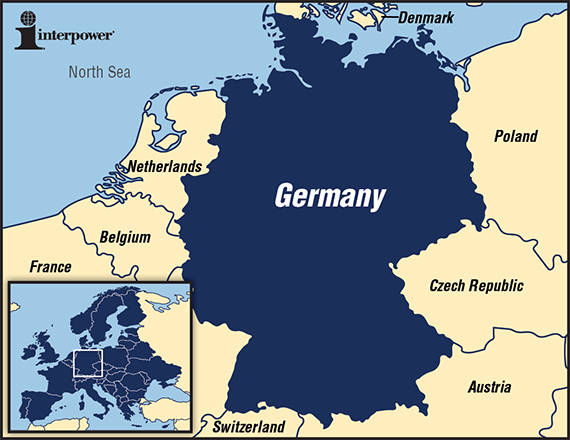Exporting to Germany

| Germany | |
|---|---|
| Actual population* | Population world ranking |
| 80,996,685 | 18 |
| Actual GDP (PPP)* | GDP world ranking |
| $3.227 trillion | 6 |
| Actual GDP (per capita)* | GDP (per capita) world ranking |
| $39,500 | 29 |
*See the end of this blog for definitions
As the largest economy in Europe and one of the largest in the world, Germany has significant influence in the global market. Due to its central location within the boundaries of the EU (European Union), trade volume, and a large number of consumers, Germany is a prime marketplace for worldwide trade.
While there may be a “buy local” outlook, offering products and services that are unique and of high quality with local after-sales support can be part of a successful market strategy. Small and medium-sized enterprises are an important part of the economic system. Within the country, there are regional differences that need to be recognized and marketed to. Companies choosing to use an agent or distributor need to make sure that the contracts are in agreement with the EU and member state laws.
Another market strategy includes the international trade fairs that are hosted in Germany for almost every business sector. Whether participating or researching possible markets, it is highly recommended for companies to take advantage of business opportunities offered through this kind of trade promotion. Advertising is another important element. However, it should be noted that it is essential to know what the advertising rules are, so working with a potential German business partner or an advertising agency when planning an ad campaign is strongly advised.
Knowledge of German business etiquette is essential. For example, find out the preferred times for appointments and make them in advance. Punctuality is crucial as is knowing the proper way to greet people.
There are a variety of resources which can assist in learning more about market entry strategies, doing business in Germany, business customs, and import/export requirements. These include the United States Commercial Service, the United Kingdom Trade and Investment, and the Germany Trade and Investment.
Germany is located in western Europe. It joined the European Union in 1957 and was one of the original EU member countries. The EU is a Customs Union. Member countries form a single region for customs purposes. Goods that have been imported legally can circulate throughout the EU with no further customs checks. To learn more about the customs regulations, among the sources to consult are the European Commission Export Helpdesk and European Commission Taxation and Customs Union. Conducting due diligence in accordance with all of the regulations is essential.
Product safety testing and certification are mandatory for this market. Learn what the German requirements are. There are a number of regulations that need to be followed. Among them are:
- REACH is the European regulation for Registration, Evaluation, Authorization, and Restriction of Chemicals. The European Commission works closely with ECHA (European Chemicals Agency) in the implementation of this regulation.
- RoHS stands for Restriction of Hazardous Substances. It restricts the use of certain hazardous materials found in electrical and electronic products.
- WEEE stands for Waste from Electrical and Electronic Equipment. WEEE requires the treatment, recovery, and recycling of electric and electronic equipment.
- By affixing the CE mark to a product, a manufacturer affirms that the product meets the necessary requirements and can be sold throughout the EU. Not all products are required to have this marking.
German is the main language spoken, although many also speak English.
In Germany, the voltage used is 230V at 50Hz. The most frequently specified plug pattern is the Continental European plug.
Sources:
www.gov.uk
www.export.gov/germany
www.gtai.de
Sources for the European Union:
www.ec.europa.eu
www.echa.europa.eu
www.rohsguide.com
www.exporthelp.europa.eu
www.europa.eu
www.export.gov/europeanunion
*Source: www.cia.gov/library/publications/the-world-factbook/index.html
Country comparison—Population: Population compares estimates from the US Bureau of Census based on statistics from population censuses, vital statistics, registration systems, or sample surveys pertaining to the recent past and on assumptions about future trends. (July 2014 est.)
Country comparison—GDP (Purchasing Power Parity): GDP (purchasing power parity [PPP]) compares the gross domestic product (GDP) or value of all final goods and services produced within a nation in a given year. A nation’s GDP at PPP exchange rates is the sum value of all goods and services produced in the country valued at prices prevailing in the United States. (2013 est.)
Country comparison—GDP – per capita (PPP): GDP – per capita (PPP) compares GDP on a purchasing parity basis divided by population as of 1 July for the same year. (2013 est.)






